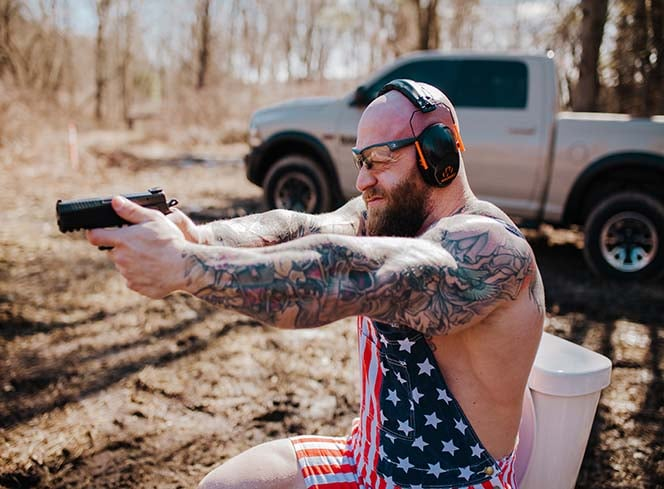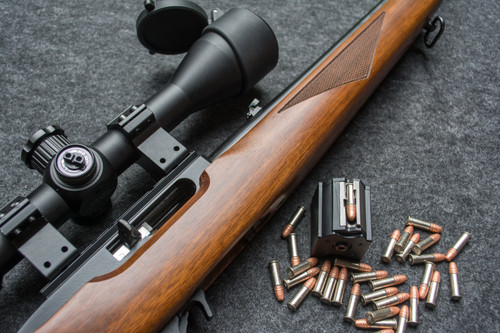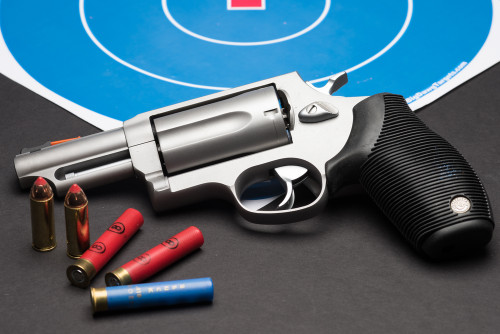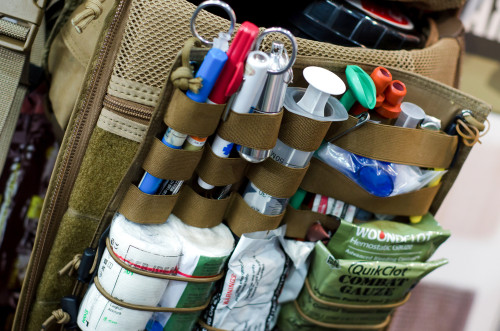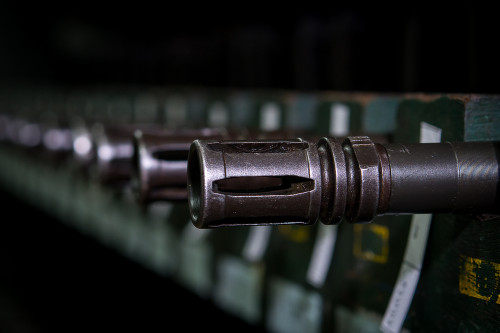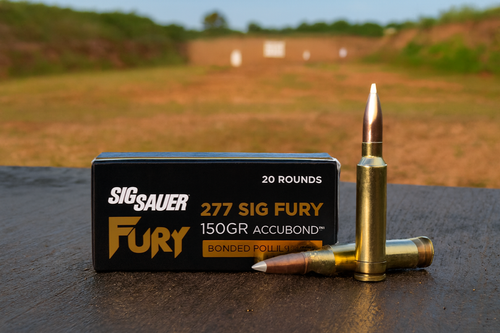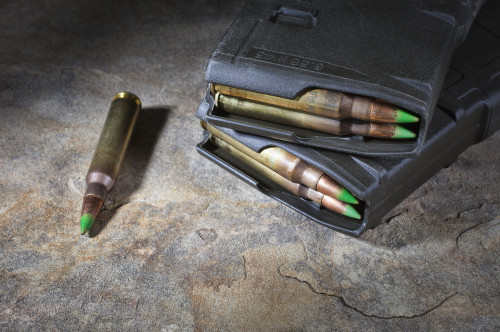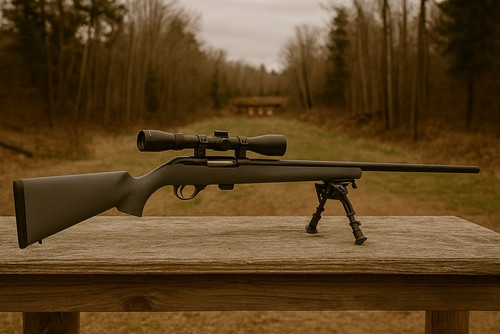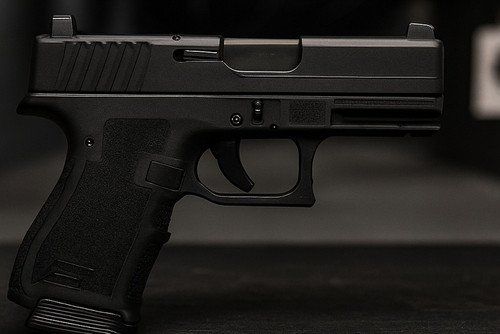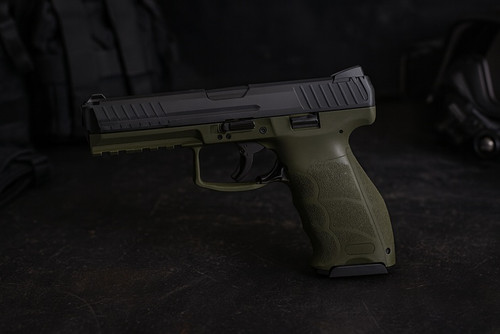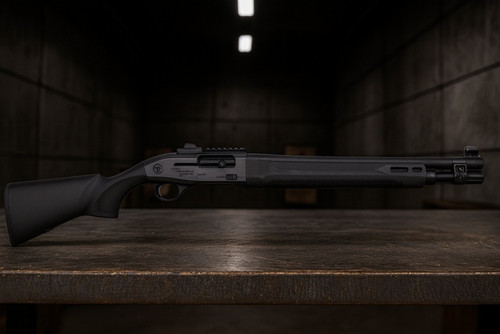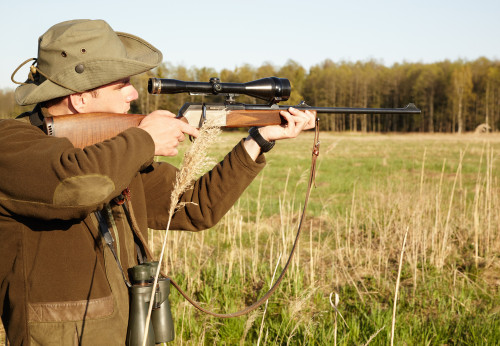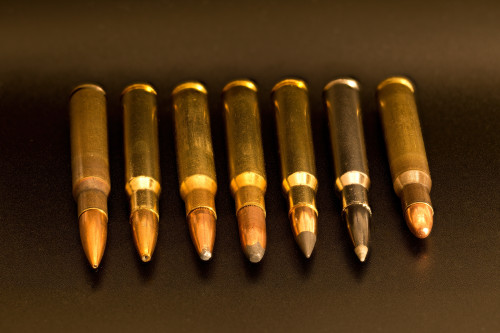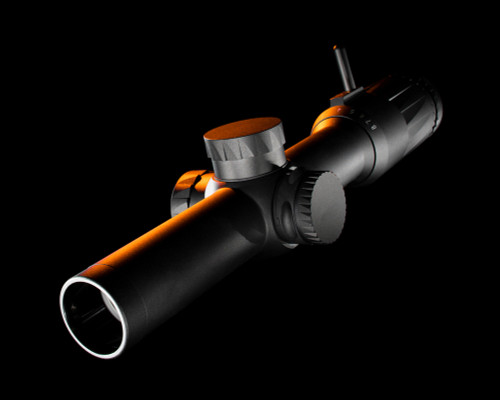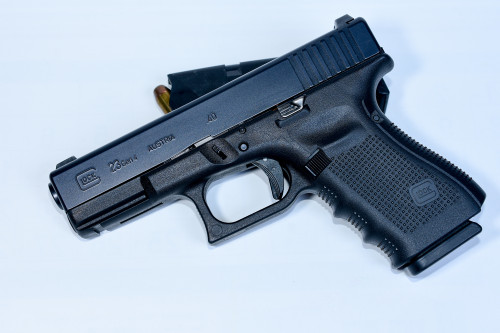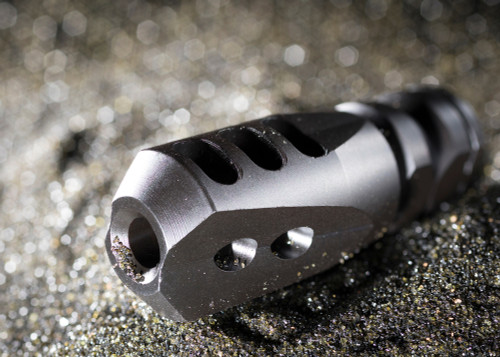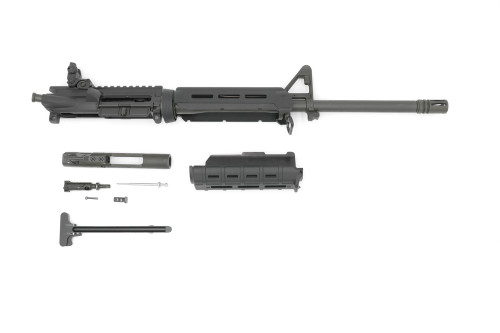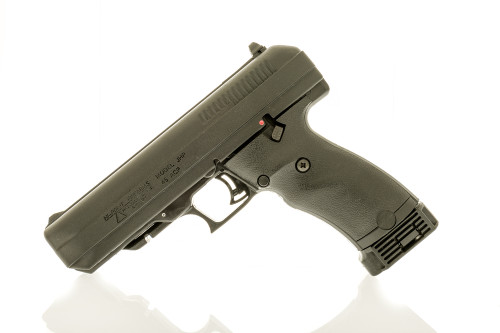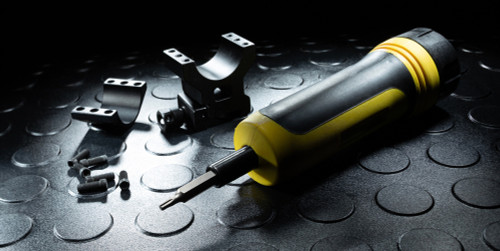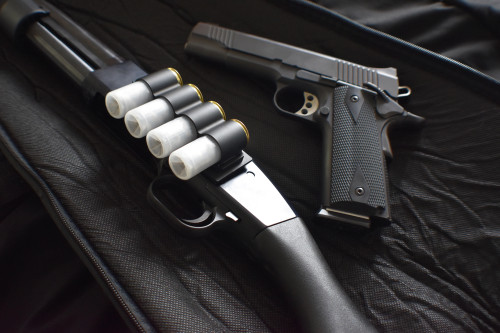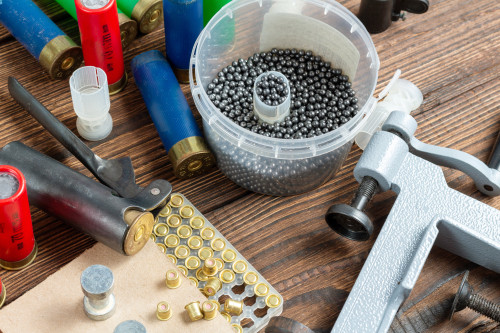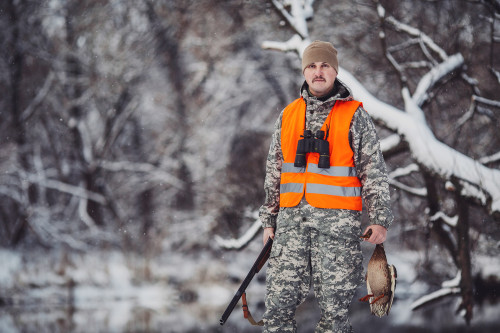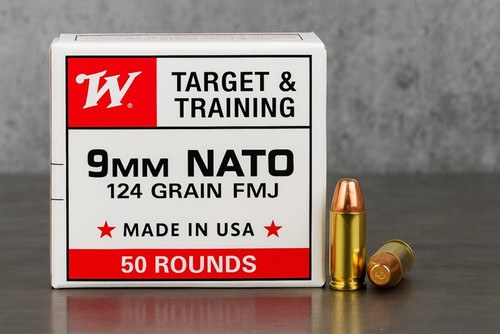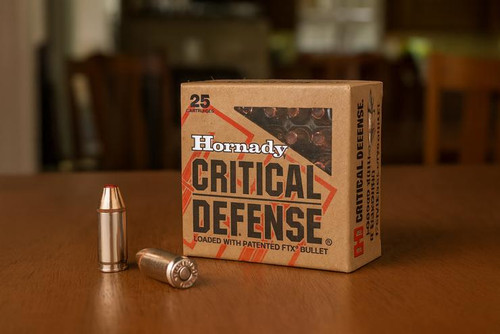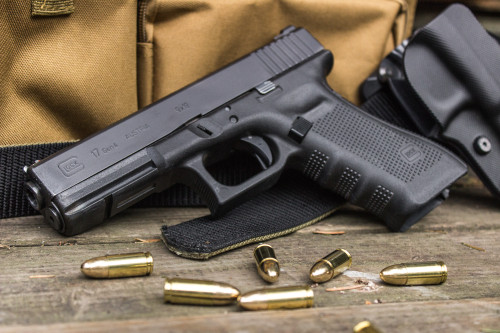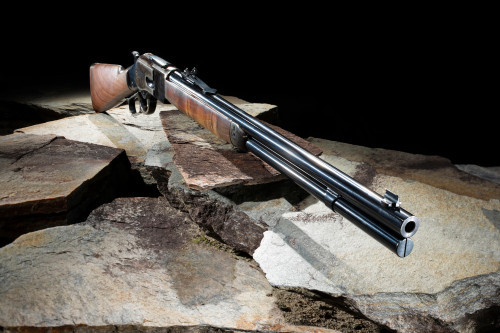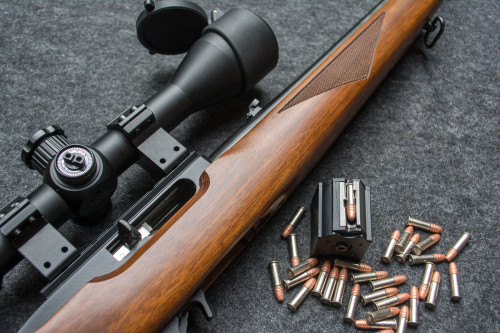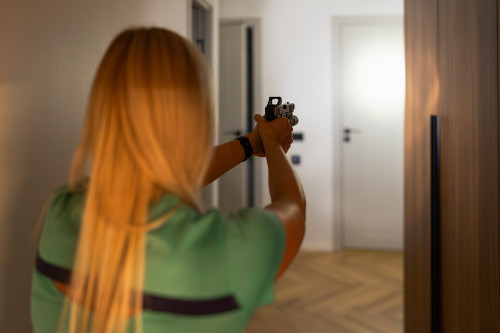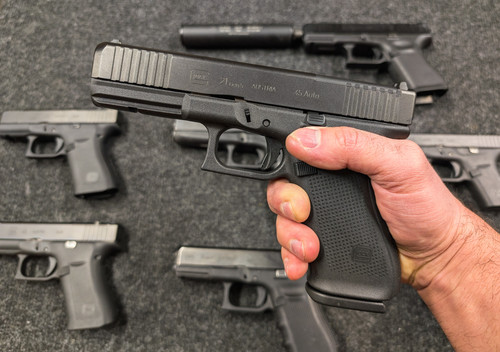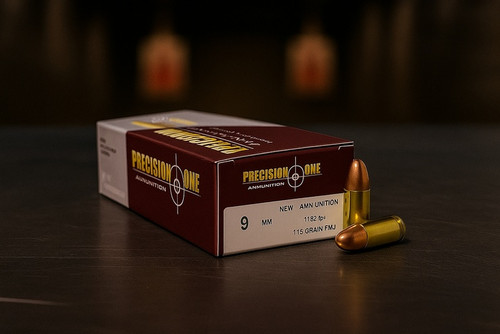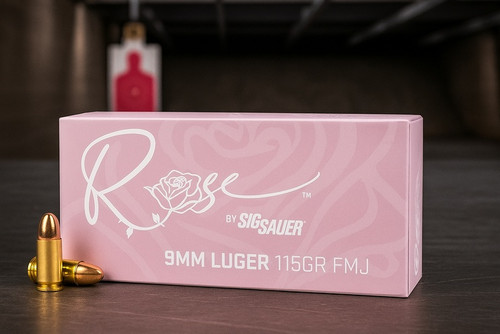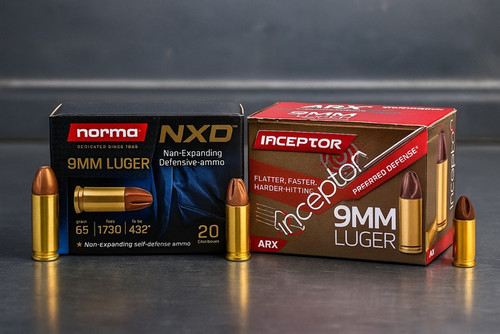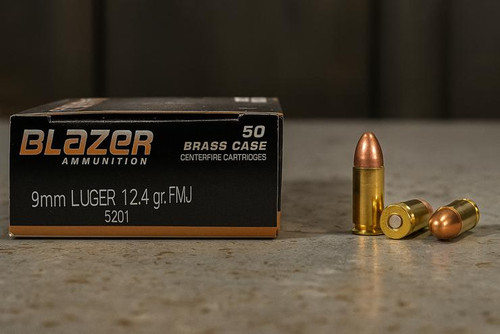Choosing the wrong handgun caliber can have deadly consequences. When confronted with a use-of-force situation where you need to use your gun, you want to make sure that it will do what it was made to do: make a bad guy stop in his tracks.
That doesn’t mean you need to go all Dirty Harry and carry a monster .44 Magnum. If a gun is too heavy and/or recoils too hard, you probably won’t carry it or practice enough to be proficient. At the same time, teeny tiny pocket guns can be difficult to shoot well and are often chambered in anemic cartridges (like the .25 Auto and .32 ACP).
Choosing any handgun caliber comes with certain tradeoffs. Your job is to find the middle-of-the-road ideal that’s easy to shoot, operates reliably, and is effective in its intended purpose. Not every handgun is made for self defense, but many are. To help you make the best choice, we’ll take a look at the most popular handgun cartridges and types, then spell out the pros and cons for each — with an eye toward practical uses and how each one stacks up against its peers.
What’s a Handgun Good For?
Handguns serve a wealth of purposes. In the military, they’re sidearms to long rifles. For most police, they’re a primary line of defense in a deadly encounter. For civilians, handguns are ideal for concealed carry as well as home defense when a rifle isn’t practical.
Other uses for handguns are target shooting in competitions such as metallic silhouette, run-and-gun competitions like US Practical Shooting Association (USPSA), and good old-fashioned plinking (casual target shooting). Big-bore revolvers are good for hunting game up to deer-sized critters. Suffice it to say that there is a lot of versatility built into handguns.
The next question: Which caliber is right for you? Let’s take a look at the most popular calibers and see which one(s) will check all your boxes.
What Are The Most Popular Handgun Cartridges?
In a nutshell, the most popular handgun cartridges are the .22 Long Rifle (LR), 9mm Luger, .40 Smith & Wesson, and the .45 ACP. Of these, the .22 is the smallest and least powerful. The other three are defensive loads that are popular among armed citizens, with the 9mm Luger being the most widely used.
The 9mm is most commonly found in semi-automatic handguns that range in size from micro-compact pocket pistols to full-size duty guns. The 9mm has become the default cartridge for today’s shooters, because it represents the best blend of easy shootability without excessive recoil and admirable terminal performance and ballistics. Terminal performance is in reference to how effective it is when it hits a target.
The .40 S&W is an upsized alternative to the 9mm. It launches bigger, heavier bullets than the 9mm, which results in more power but also a livelier shooting experience. The .45 ACP is another step up and appeals to those looking for a bit more oomph in their daily carry rig.
Is a More Powerful Handgun Better?
In a word, yes — and no. Sure, a bigger, badder cartridge delivers more energy, penetration and better terminal ballistics. But as you crank the volume toward 11, the recoil, blast, and muzzle flip get stouter.
So where’s the line for too muchpower? The answer will vary from person to person, and there is no one-size-fits-all caliber. There is, however, something out there that works for you. Whether or not internet keyboard commandos have deemed it acceptable is irrelevant. If you listen to prevailing opinions, you will likely be disappointed in your choice and not carry the gun at all just because of someone else’s preference. Make your own choice based on your situation, budget, and ability.
Before you settle on purchasing a handgun, it’s of paramount importance that you test-fire a variety of different guns and calibers first. This might mean reaching out to a gun-loving friend or renting some guns at a range.
It’s natural to be hesitant about shooting a gun for the first time. If you squeeze the trigger and are rewarded with a deafening blast, a blinding fireball, and the gun flying over your shoulder, you might not be inclined to take another shot. That’s why it’s a good idea to reach for a .22 LR rimfire of some sort when you’re just starting out. Even though they’re a dubious option for self-defense, these rounds offer the least amount of recoil, concussion, and noise.
Why Size Matters
Size is another tradeoff with big, powerful cartridges. The size of your cartridge dictates that you’re either carrying a huge gun or fewer bullets. Where a compact 9mm might hold 15 rounds of ammo in its magazine, a similarly sized .45 ACP may only hold 10.
In a similar way, the size of your blaster has about as much of an effect on felt recoil and shootability as the caliber it shoots. The tradeoff here is concealability and shootability. The bigger a gun is, the easier it is to shoot and the harder it is to hide. The inverse is true with a tiny mouse gun that fits in a pocket but is nearly impossible to hold on to when fired.
Once again, it’s ideal to find someone with a few different guns to see what works best for you. For what it’s worth, most gun enthusiasts are more than willing to give a new shooter the full rundown on firearms, so don’t be afraid to put yourself out there.
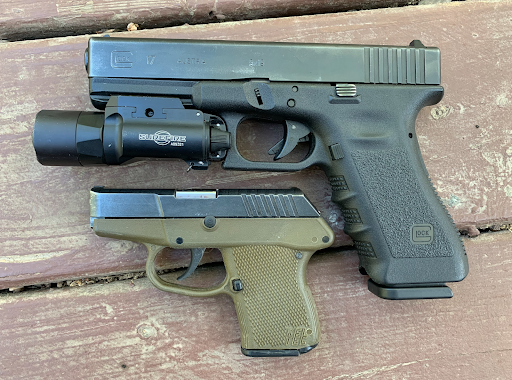
Opposite ends of the shootability and concealment spectrum: The tiny 6-shot Kel-Tec is as concealable as guns come, but they’re also challenging to shoot well. The full-size Glock 17 is a smooth shooter with great capacity, but you’ll have a hard time if complete concealment is your goal.
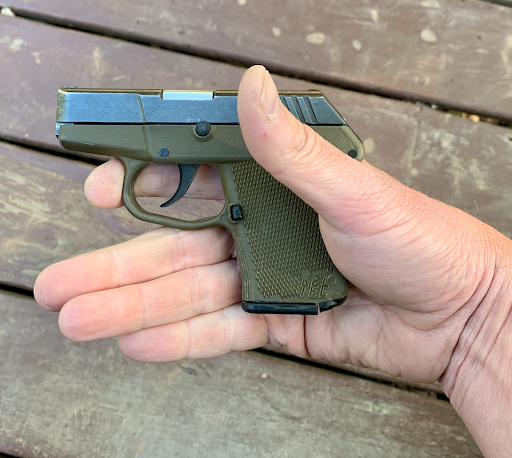
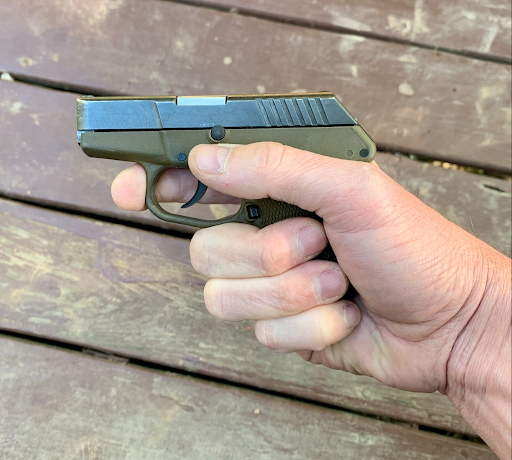
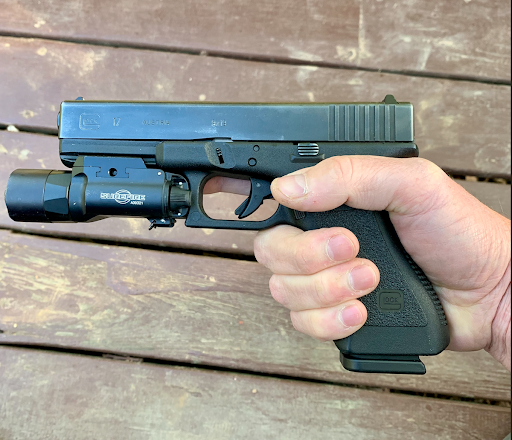
Note how the shooter is only able to grasp the Kel-Tec’s handle/stock with the middle and ring finger. On the full-size Glock 17, there’s more handle to spare, meaning the gun will be more controllable.
Differences Between Revolvers and Semi-Automatic pistols
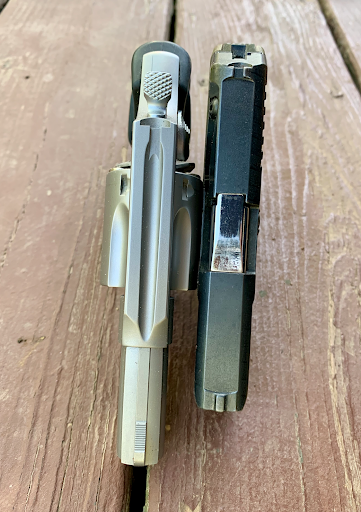
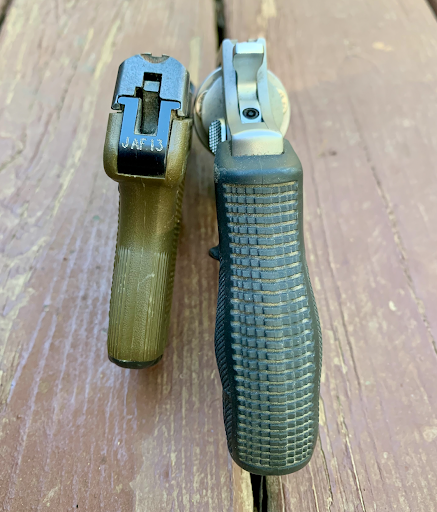
Revolvers, for all their benefits, are chonky compared to similarly sized semi-autos.
The biggest difference between revolvers and semi-automatic pistols is how they carry ammo. Semi-automatic pistols usually have a detachable magazine in which the ammo is stored. It’s inserted into the grip of the gun and is fed into the chamber from there.
A revolver keeps ammo in a cylinder that revolves (hence the name), or rotates, as the trigger is pulled. This positions cartridges one at a time in line with the barrel. This is a much older design, but is still relevant today for a handful of jobs.
The revolver’s cylinder acts as the “chamber” of the firearm, however the revolving design means that there are technically multiple chambers in a revolver (whereas semi-auto pistols only have one chamber). This is the biggest difference between the two types of handguns.
The pros and cons of these two platforms are many, but these are the big takeaways:
| Revolvers | Semi-Automatic (Autoloaders) |
|---|---|
| Can shoot more powerful ammunition | Carries more bullets |
| More versatile (lots of ammo compatibility)* | Slimmer (more easily concealed) |
| Unquestioned reliability | Lighter weight |
| More popular for self defense |
* A gun chambered in the powerful .357 Magnum can also shoot the mild-mannered .38 Special, and the mighty .44 Magnum can fire the less burly .44 Special, giving shooters a less punishing shooting experience on the practice range.
Handgun & Pistol Caliber Comparison
Let’s dive into a (mostly) complete list of handgun calibers and compare bullet weights, velocity, power (kinetic energy), recoil, and price. Then, we’ll grade them with an overall shootability score from 1-5. We say “mostly” complete because it’s unlikely you’ll find a common gun chambered in something not on this list — but it’s still possible.
If you’re just looking for the facts and specs, here’s a ballistic chart comparing the types of pistol calibers we’ll cover:
| Avg. Bullet Weight (grains) | Avg. Velocity (fps) | Avg. Energy (ft.-lbs.) | |
|---|---|---|---|
| .22LR | 36-40 | 700-1,300 | 130-200 |
| .25 Auto/ACP | 35-50 | 700 | 60-70 |
| .32 Auto/ACP | 60-70 | 900-1,050 | 120-170 |
| .380 Auto/ACP | 85-100 | 1,000-1,200 | 200-300 |
| .38 Special | 110-158 | 700-1,150 | 180-325 |
| 9mm Luger | 115-147 | 1,100-1,300 | 350-500 |
| .357 Sig | 100-125 | 1,300-1,600 | 500-650 |
| .40 S&W | 135-185 | 1,100-1,300 | 450-590 |
| .45 Auto/ACP | 185-230 | 850-1,200 | 350-800 |
| .357 Magnum | 110-200 | 1,100-1,400 | 550-800 |
| .44 Special | 200-240 | 700-900 | 300-400 |
| .44 Magnum | 240-300 | 1,050-1,500 | 1,000-1,400 |
Of course, this is just a brief overview. Read on for a more in-depth look at each caliber.
.22 Long Rifle (LR)
The .22 LR is the darling of the plinking crowd, and is a fantastic way to get newbies into the shooting sports. In large revolvers, it has almost nonexistent recoil, minimal blast, and great capacity in newer autoloaders. However, its paltry energy levels prevent it from being considered a serious defensive cartridge.
Some folks like to think of the .22 as the perfect “woods gun” caliber, perfect for when they’re traipsing about in flannel blasting squirrels off tree limbs. This is a silly fantasy. If you’re really out camping and living off the land, you’re more likely to have a shotgun for gathering meat and a centerfire rifle for protection.
Common bullet weights: 36-40 grains gr.
Average Velocity: 700-1,300 fps
Kinetic Energy: 130-200 ft.-lbs.
Recoil: Low
Price: $
Overall: ****
Despite its anemic numbers, the .22 LR still gets four stars because of its affordability, user friendliness, and how much fun it is to shoot. It’s the gateway drug into shooting sports.
.25 Auto
The .25 Automatic Colt Pistol (ACP) is something of an enigma these days. It’s super weak, hard to find, and most of the guns that fire it are more than 100 years old. That’s not saying that everything 100 years old is outdated (the 9mm Luger still kicks ass), but there’s been zero innovation on the .25 in a very long time. About the only ammo available for it is full metal jacket (FMJ), which isn’t a great option for self defense. However, at such weak velocities, it’s about your only choice.
Its cost makes it impractical for training and plinking, its energy makes it a no-go for serious defensive work, and just about the only way you’re gonna find a gun chambered in .25 ACP is to inherit it from your grandpa or grab one at an estate auction.
Common bullet weights: 35-50 gr.
Average Velocity: 700 fps
Kinetic Energy: 60-70 ft.-lbs.
Recoil: Low
Price: $$$$
Overall: *
Unless you already have a .25, don’t go looking for one. This old juice ain’t worth the squeeze.
.32 ACP
The .32 Automatic Colt Pistol (ACP) is where gun fans begin to flirt with acceptable power levels of a defensive cartridge. There are modern guns that fire the .32, as well as modern expanding bullet designs. Many .32 guns are subcompact or pocket pistol-sized, so shooting well takes practice.
Common bullet weights: 60-70 gr.
Average Velocity: 900-1,050
Kinetic Energy: 120-170 ft.-lbs.
Recoil: Low
Price: $$$
Overall: **
If you’re especially shy toward recoil and blast, or want a tiny mouse gun that’s not a .22, give the .32 a look. For everyone else, it’s usually not the best pick.
.380 Auto
The .380 Auto/ACP (Automatic Colt Pistol) is where we get into “real” self defense calibers. We say real because it has decent power and energy levels, plus there are plenty of modern guns chambered for it.
Magazine capacities can be in the teens in some models. Even in larger offerings, the recoil can be easily controlled by a novice.
Common bullet weights: 85-100 gr.
Average Velocity: 1,000-1,200
Kinetic Energy: 200-300 ft.-lbs.
Recoil: Low-Medium
Price: $$$
Overall: ***1/2
The .380 combines decent power levels with a good selection of modern ammo and can be found in a plethora of guns. It’s a great option for new or older shooters, or those who aren’t quite ready to take on a 9mm or greater.
.38 Special
The venerable .38 Special is long in the tooth, but it’s benefitted from more than a century of innovation. It’s a revolver cartridge, and the most popular one at that. Its popularity has kept it current with bullet designs as they’ve evolved from plain lead slugs into modern, expanding hollow points.
The .38 is an extremely versatile cartridge. Loadings for the .38 range from “mouse fart” softies to full-power +P loads that deliver serious kinetic energy. Before venturing out on a power trip, however, be sure that your firearm is capable of handling +P loads. Hint: It will if it’s a .357 Magnum or it says .38 Special +P on the barrel.
Common bullet weights: 110-158 gr.
Average Velocity: 700-1,150 fps
Kinetic Energy: 180-325 ft.-lbs.
Recoil: Low-High, depending on the load
Price: $$
Overall: ****
The .38 Special gets 4 stars because of the huge range of loads for it, from low-recoiling plinking rounds to hot ‘n’ heavy defensive loads. The only downside to the .38 Special is the fact that it’s exclusively a revolver round. This means if you choose to carry a .38, you’re stuck with a gun that’s chunky and carries only five or six shots. That said, revolvers are a solid choice for defensive purposes.
9mm Luger
In today’s world, the 9mm Luger, aka 9mm Parabellum or 9x19mm, is the king of handgun calibers. It’s the most ubiquitous and popular option for a bevy of reasons. Chief among them is the fact that it offers the best blend of recoil, performance, ammo selection, and price.
The 9mm is a 100-plus year old design, but it’s been the recipient of the bulk of handgun innovation in that time, especially in the past decade. When a new pistol round is designed, it usually debuted in 9mm.
The 9mm offers great capacity, with as many as 15 rounds in a subcompact magazine. It also delivers excellent velocity even in short barrels. In pocket-sized guns, recoil can become sharp and snappy.
Even if you’re on the fence about a 9mm, the recoil is manageable enough that even timid shooters can learn to harness the recoil of the 9mm (which is definitely worth it).
Common bullet weights: 115-147 gr.
Average Velocity: 1,100-1,300 fps
Kinetic Energy: 350-500 ft.-lbs.
Recoil: Medium
Price: $$
Overall: *****
The 9mm earns five stars because of its versatility and excellent combination of velocity, power, recoil, capacity, and price. It’s also got the widest variety of ammo available of any caliber.
.357 Sig
This funky bottlenecked cartridge is a speed demon, but it’s also kind of pointless. Sure, it puts up great numbers for energy and velocity. But it’s a handful to shoot, murder on the ears, and pretty expensive.
Even in larger guns the .357 Sig produces snappy recoil, making follow-up shots and double taps (shooting two shots in quick succession) difficult without lots of practice. It has a cult following of shooters who appreciate its excellent on-target penetration, but most shooters find the marginal performance gains not worth the extra coin and harsh shooting.
Common bullet weights: 100-125 gr.
Average Velocity: 1,300-1,600 fps
Kinetic Energy: 500-650 ft.-lbs.
Recoil: High
Price: $$$$
Overall: **
The .357 Sig is the answer to a question very few folks are asking. It costs a lot to shoot and is blasty when fired. But it does have excellent penetration and velocity.
.40 Smith & Wesson
The .40 Smith & Wesson (.40 S&W) is a Goldilocks cartridge if there ever was one — but is it “just right”? It came as a result of police departments looking for a more “shootable” cartridge with less harsh recoil than the mighty 10mm Auto, but with more power than the 9mm Luger. On paper, it’s the perfect solution.
The .40 does fall neatly between the 10mm and 9mm, but it’s generally still too hot for many new shooters. It’s not an uber hammer that’s gonna leave you concussed, but it's a high pressure cartridge shot from polymer-framed autoloaders (which are generally lightweight), so you feel more of the recoil. Plus, you give up magazine capacity in a .40 vs. a 9mm — but .40 fans are obviously okay with this tradeoff.
Common bullet weights: 135-185 grains
Average Velocity: 1,100-1,300 fps
Kinetic Energy: 450-590 ft.-lbs.
Recoil: High
Price: $$
Overall: ****
If you’re willing to put the time in to train with it, the .40 is a very good option for self defense. For plinking and casual work, you might want to find a nicer round to play with.
.45 ACP
The .45 has enjoyed success for more than a century. It’s somewhat of a throwback from a time when both rifle and pistol ammo was lower powered and lower velocity, mainly because propellants weren’t as efficient as they are today. This meant you needed a big slug to achieve the desired results on bad guys. There’s a wide array of ammo available from slow-moving 230-grain FMJ ball ammo to HOT 185-grain +P loads that will really get your attention.
A modern .45 is unquestionably an effective man stopper, and it’s been made even more lethal through the decades with the advent of modern projectiles and propellants. Delivering a slug that’s nearly a half-inch in diameter through a perp sends a message pretty quick. It’s also snappy recoiling in lightweight autoloaders, but in hefty steel-framed guns like 1911-style pistols, it’s more manageable and incredibly accurate.
Common bullet weights: 185-230 gr.
Average Velocity: 850-1,200 fps
Kinetic Energy: 350-800 ft.-lbs.
Recoil: High
Price: $$$
Overall: ****
Like the .40, if you want to put in the time to train and manage its recoil, the .45 is an extremely effective defensive cartridge. Plus, when someone asks you why you carry a .45 you'll be able to deliver the ultimate Boomer banality, “CaUSe ThEy DoN’t MaKe A .46!”
The phrase is silly for many reasons, not least because “they” in fact do make a few varieties of the .46 (.460 Rowland, .460 XVR) and even a few .50s (.500 S&W Magnum, .50 Action Express).
.357 Magnum
The .357 Magnum is about as versatile a round as there is. It can be an absolute behemoth, slinging 158-grains of hate at north of 1,300 fps. It can also be a powder puff, popping lead slugs out at speeds less than half that. Plus, revolvers chambered in .357 Magnum can also shoot .38 Special bullets.
The .357 was a long-standing service revolver cartridge, offering more energy than the .38 Special to cops who needed more oomph to get bullets through auto glass and car doors. To put this in perspective, a full-house .357 load would easily pass through a car windshield, the criminal driving the car, his seat, the back seat, and finally lodge itself into the freshly stolen stack of cash in his trunk.
By now, you ought to know physics is a thing — and this kind of performance comes at cost. The cost is your wrist and eardrums if you’re not wearing hearing protection. You want a revolver with a barrel length of at least 4” to get the most out of this cartridge, otherwise the impressive fireball of gunpowder is just wasted energy.
Common bullet weights: 110-200 gr.
Average Velocity: 1,110-1,400 fps
Kinetic Energy: 550-800 ft.-lbs.
Recoil: Low - High, depending on load
Price: $$$
Overall: ***1/2
The .357 Magnum is a proven threat stopper. It’s also a very popular cartridge for competitions like metallic silhouette, where shooters attempt to knock over steel targets at distances up to 100 yards. The .357’s flat-shooting and powerful nature make knocking over heavy targets easy at most any distance.
.44 Special
This is a cartridge that doesn’t get enough love. If you’re set on carrying a revolver and want to put the biggest hole in something without biblical levels of recoil, the .44 Special is a strong contender. It offers a good blend of whoopin’ power and manageable recoil.
The .44 Special is actually the parent case of the .44 Magnum and can be shot in .44 Magnum revolvers. The case is large and in charge and requires a big gun to house the rounds, but that’s a feature, not a bug. You want some weight to soak up the recoil. Like many wheelgun loads, the .44 Special can be loaded super mild or stuffed full of gunpowder (do NOT do this when handloading), and is made to mimic some .44 Magnum loads.
That’s the beauty of it (as with many revolver loads). You don’t have to give a cartridge enough juice to cycle a slide and eject an empty like you do with autoloaders. All you need is enough juice to get the bullet out of the case and down the barrel.
The downside of the .44 Special is price. Like many niche or not-so-mainstream cartridges, ammo can be hard to come by unless you’re a handloader. When you do find it, it can be pricey.
Common bullet weights: 200-240 gr.
Average Velocity:700-900 fps
Kinetic Energy: 300-400 ft.-lbs.
Recoil: Medium to High
Price: $$$$
Overall: ***
Don’t be fooled by the seemingly low kinetic energy levels of this big-bore cartridge. It’s a bruiser and a good option even if you buy a .44 Magnum wheelgun.
.44 Magnum
“Do you feel lucky?”
These famous lines could only come from someone holding “the most powerful handgun in the world,” one that “will take your head clean off” — a .44 Magnum.
Dirty Harry’s Smith & Wesson Model 29 was, at the time, indeed the world’s most powerful handgun. Since the film debuted, the .44 Mag’s power levels have been eclipsed a few times over. That said, it’s still an absolute hammer of a cartridge.
While it won’t take your head clean off, it’ll certainly make your dentist blush if you try to catch a .44 slug with your teeth. A .44 Magnum can be described as a gun that kills on one end and maims on the other. Recoil in smaller guns is extremely stout to the point of being painful. If you’re a novice shooter, that’s dangerous.
It’s not just the recoil that makes the .44 Magnum impractical for a defensive cartridge, it’s the size of most guns that shoot it. They’re huge, and rightfully so. A “small” gun shooting full-power loads and held with a timid grip is liable to kick back and lodge itself in your forehead.
Okay, maybe it’s not that bad. Still, it is a fun cartridge to shoot once in a while — when it’s someone else’s gun.
If blast and recoil detectable by the Richter scale and artillery-sized guns aren’t enough to turn you off, the .44 Mag is also pretty spendy. At the same time, why wouldn’t you want to shoot a .44 at least a few times?
Common bullet weights: 240-300 gr.
Average Velocity: 1,050-1,500 fps
Kinetic Energy: 1,000-1,400 ft.-lbs.
Recoil: Crap-your-pants biblical (High)
Price: ****
Overall: **1/2
The .44 Magnum is not to be trifled with, but when you absolutely must have a hand cannon, accept no substitute.
Final Thoughts
So what’s the best handgun cartridge? It’s the one you’re most comfortable with, can afford to shoot regularly, and have confidence in. If any one of these three factors isn’t present, you’re not going to shoot or carry your gun all that much.
The path to proficiency begins with testing a few different guns and calibers, then continuing to practice so you’ll be able to place effective fire on target when you need to. That said, don’t take it too seriously! It’s okay to just go out and have fun shooting sometimes.
That’s why we do what we do at Pro Armory — we provide fuel for the great American shooter in all of us. Get started picking the best caliber for your needs by browsing our wide selection of handgun and pistol ammo. Our team of experienced veterans and firearms enthusiasts is also available to help you find the right equipment to keep your guns fed and happy.




